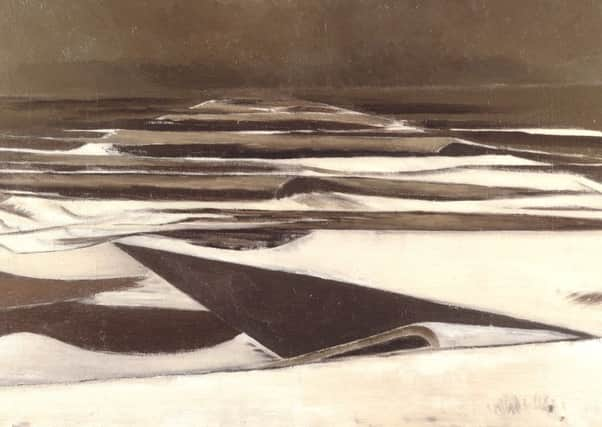Seminal work


The latest exhibition at York Art Gallery, curated by leading contemporary artist John Stezaker, is a three-part show exploring the ground-breaking work of Paul Nash.
It features seminal inter-war landscapes by Nash and his contemporaries – including Stanley Spencer, Edward Burra, William Townsend and Sydney Carline – as well as a display of Stezaker’s own work, including new pieces inspired by Nash’s approach to landscape painting, and a collection of rarely seen Nash prints, drawings and photographs, which give an insight into the life of Paul Nash and his brother John.
Advertisement
Hide AdAdvertisement
Hide AdStezaker is known for his striking surrealist photographic collages which employ vintage images, old Hollywood film stills, postcards and other printed matter. Like Nash he studied at the Slade School of Art and has long been an admirer of his work. He remembers as a schoolboy seeing Nash’s picture The Pillar in the Mirror and says that it not only introduced to surrealism but also opened up a whole new way of thinking about what art could be and more specifically “what I could do.”
Although Nash’s First World War paintings are probably his most famous works, Stezaker is particularly interested in the landscapes he created in the years following the conflict. “I think one of the reasons the interwar period has come to fascinate me recently may be because there is this feeling that we are on the verge of another apocalypse,” he says. “But the interwar period feels like a time of emptiness. There were a lot of artists working then who went through the First World War, many of whom are in this show, and did suffer. They seem to have come out of it not painting the horrors of war but its aftermath. So you get these frozen landscapes and it is that which interests me. It is not a sublime relationship with the landscape; it is not homely – it is about dislocation and spatial estrangement.”
Stezaker says he chose the title Uncanny Landscape for the show because it reflects that idea of disassociation, depicting the unfamiliar within the familiar, a central feature of surrealism. Included in the exhibition are several of his own landscape collages which have not be exhibited widely in the UK. “I thought this was a great opportunity to show them,” he says. “It is a section of my work that I am very passionate about although I was slightly overawed by showing with my great hero Paul Nash.” His latest landscape works demonstrate Nash’s influence, featuring the kind of geometric patterns often present in works by Nash, and creating a similar ‘uncanny’ and unnerving ambience through the clash of the real and unreal. Winner of the Beutsche Borse photography prize in 2012, Stezaker has in the past spoken about how images, from old books, magazines and postcard, “find him” and not the other way round. “I often feel it is pre-destined,” he explains. “I go into a bookshop and I find something. Images for me have to be lost before they can be found – in a way they are like orphans – and then they are saved from disappearance.” He has, he says, throroughly enjoyed curating the show. “It’s been a really interesting process, and it became a fascinating exploration of the York Art Gallery collection.”
Nash and the Uncanny Landscape is at York Art Gallery until April 15, 2018.